The Power of Transmedia Storytelling

Audiences crave immersive experiences that extend far beyond the screen. They want to know more about the stories they love, connect with characters on a personal level, and feel like they’re truly part of a living universe. This is where transmedia storytelling comes in as one of the best strategies for expanding Intellectual Property (IP). Transmedia storytelling is the art of world-building across multiple platforms. It’s not just about shoving the same story onto every screen; it’s about creating unique content for each medium, adding layers of detail and complexity to the overall narrative. Video games, in particular, can provide the most immersive experience. Imagine a video game~~’s~~ plot that explores events outside the web series, revealing character backstories and enriching the overall narrative. This interconnectedness creates a richer, more engaging experience for players, fostering a sense of community and keeping them glued to the story. A straightforward example is the world of Star Wars and Harry Potter, which has expanded its lore through numerous games and other media, growing its fanbase across generations. How Transmedia Storytelling Can Benefit Your IP Deeper World-Building Expand your IP universe by introducing new characters, locations, and plotlines through other media. This expansion will create a sense of depth and realism. Enhanced Player Engagement Transmedia allows players to participate actively in the narrative. For example, social media campaigns can spark discussions, AR (Augmented Reality) experiences blur the line between reality and the game world, and mobile games offer ongoing challenges and rewards. Increased Brand Loyalty Offering a wider range of entry points into your story can attract a broader audience. Fans who might not have been interested in other media can still connect with the world through games, fostering a stronger overall brand identity. Challenges and Considerations Maintaining Narrative Consistency Ensuring all narrative threads weave together seamlessly across multiple platforms is crucial. Disjointed narratives or inconsistencies can confuse and disengage your audience. So, it requires meticulous planning and collaboration across your team to guarantee a cohesive experience. Resource Management Transmedia storytelling can be resource-intensive. Crafting compelling content for platforms like mobile or Virtual Reality (VR) apps requires an additional workforce. You will need writers, designers, and developers skilled in different media to bring your vision to life. Carefully assess your resources and consider strategic partnerships to ensure the quality of your transmedia experience. Audience Targeting Audience Targeting Not all audiences consume media in the same way. Tailoring content for specific platforms and demographics is essential. Understanding your target audience and media consumption habits is vital to crafting resonating transmedia experiences. Despite these challenges, the rewards of transmedia storytelling are vast. By carefully considering these points, you can navigate these hurdles and create a transmedia experience that captivates your audience. Crafting a Cohesive Transmedia Experience Transmedia storytelling offers a powerful tool to expand your IP and engage audiences on a deeper level. But how do you ensure your transmedia efforts come together effectively? Here are some key strategies: Worldbuilding Across Platforms Don’t just replicate your story across every platform. Each medium should offer unique content that expands the overall world. When your web series focuses on the main story, you can design a mobile game that offers side quests that explore the character’s backstory. Embrace the Strengths of the Platform While web series viewers can only ‘follow’ the story as the creators dictate, gamers can control their own pace in experiencing the narrative by exploring the environment and interacting with other characters before eventually embarking on the main quest to progress the story. By tailoring the content to leverage the platform’s strength, you can create memorable experiences for your audience. Create Transmedia Teasers and Reveals to Build Anticipation Plant subtle clues across platforms. Offer exclusive content reveals for specific platforms. This method builds anticipation and keeps your audience engaged. Agate Expertise in Crafting Amazing Stories and Exceptional Video Games Agate has years of experience creating unique and exciting stories. Memories: Your Story, Your Choice is a branching narrative mobile game reimagining classic fairytales. This focus on player choice and branching narratives demonstrates Agate’s ability to craft engaging stories. We also developed an original story for this game titled Celestia: Chain of Fate (CCF), one of the most widely-played popular stories. Due to its popularity, Celestia: Chain of Fate is being developed into a separate game for Nintendo Switch and Steam, with a demo currently available on Steam. Watch the trailer here. https://www.youtube.com/watch?v=9tJXh7mbAjo We also have the Valthirian Arc series, a testament to Agate’s dedication to world-building and captivating narratives over 15 years. Our newest game, Valthirian Arc 2: Hero School Story, combines the management and RPG genres, drawing visual inspiration from various world cultures. This game won an award in the Best Narrative category at PAX East. Watch the trailer here. https://www.youtube.com/watch?v=l4pqOzE8cNY We don’t limit ourselves to original creations. We’ve partnered with established IPs to bring fan-favorite characters to life in new ways. Our collaboration with Upin & Ipin resulted in Upin Ipin Demi Metromillenium for iOS. In this action-packed endless runner, players help Upin & Ipin protect Metromillenium City from the clutches of the villainous Dr. Sally and his Eggbot army. Collect coins to unlock new costumes and upgrade skills, all while conquering missions to save the city! Upin Ipin Demi Metromillenium gameplay We also expanded the Tahilalats IP by creating an exclusive theme featuring characters from the webcomic for our mobile game Pair Up, which is available on Android and iOS. Pair Up is a reimagining of the classic Onet game, where you connect matching pictures with a line that doesn’t bend more than three times. This collaboration allows Tahilalats fans to enjoy their favorite characters in a whole new way while experiencing the fun and challenge of Pair Up. Pair Up with Tahilalats theme Ready to take your IP to a new level? If you are looking for a partner to craft a captivating transmedia experience for your IP, co-development, art services, or game porting, look no further than Agate! As one
Beyond Blockbusters: The Growing Influence of Non-AAA Games
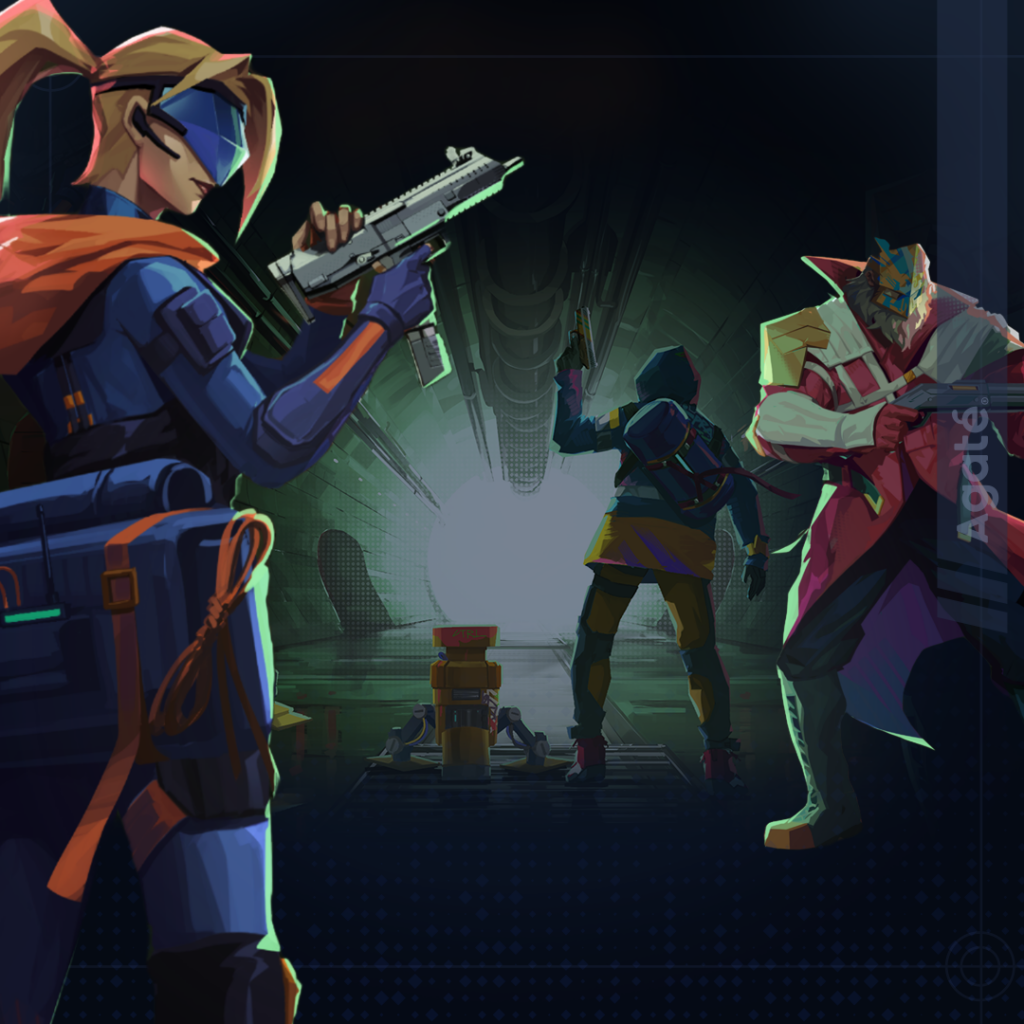
In an industry dominated by blockbuster AAA titles, could the future of gaming lie in the hands of smaller, more innovative developers? As the gaming market soars toward a projected US$363.20 billion by 2027, non-AAA games are carving out a significant niche. Market insights from Statista indicating an annual growth rate of 8.76% between 2024 and 2027, hinting at vast opportunities for these emerging players. One indicator of this shift is the growth of indie games. According to Konvoy, citing a VG Insights report, indie games accounted for 31% of Steam’s revenue in 2023, up from 25% in 2018. This achievement is particularly notable considering the release of numerous high-quality AAA games in 2023, which traditionally held most gamers’ interest. What Draws Players to non-AAA Games From the outset, indie or non-AAA game developers have carved a distinct niche in the gaming landscape. Unlike their AAA counterparts, who often focus on established IPs through sequels and established formulas, non-AAA developers take a more creative and experimental approach. They prioritize: Unique Gameplay Mechanics: Non-AAA developers are fearless in breaking common practice and experimenting with innovative gameplay mechanics. These can range from fresh takes on existing genres to entirely new concepts that push the boundaries of interactivity. This focus on originality keeps gameplay engaging and avoids the feeling of repetitive experiences often associated with sequels. Compelling Narratives: While not every non-AAA game boasts a sprawling narrative, those that do often present unique and captivating stories. Unburdened by the pressure to cater to established franchises, non-AAA developers can explore diverse themes and storytelling techniques, resulting in fresh, impactful narratives that resonate with players. Artistic Innovation: Non-AAA developers often have more creative freedom regarding art style and visual design. This freedom can lead to visually stunning games that push the boundaries of what’s possible or offer unique aesthetics that wouldn’t be possible within the constraints of a major franchise. A report by Newzoo highlights a trend of overlapped players engaging with breakout titles featuring new IPs. This trend demonstrates gamers’ willingness to embrace “next big thing” titles. Notably, the Action RPG genre has emerged as a consistently popular choice among gamers, steadily increasing total playtime. The report also identifies the top 10 games with the highest Monthly Active Users (MAUs) in 2023. The results reveal that games offering diverse gameplay experiences are crucial to retaining gamer engagement. Agate’s Expertise in Indie and AA Game Development https://cdn.akamai.steamstatic.com/steam/apps/256980998/movie480_vp9.webm?t=1709114510 Regarding action games with unique gameplay, Agate is a co-developer of RIFTSTORM. RIFTSTORM is a Multiplayer Roguelite Shooter featuring, challenging dungeons, and high replayability for solo and up to 3-player co-op. RIFTSTORM has successfully completed two pre-alpha tests, receiving positive feedback from players. Explore Agate’s involvement in more detail here. https://www.youtube.com/watch?v=RqYrIkYTong Agate also boasts extensive experience crafting games that deliver varied experiences. In 2023, Agate joined as a Global Growth Development Partner of ZEPETO (Naver Z), a 3D avatar creation app and virtual world platform. Agate’s role in this partnership centers on enriching ZEPETO’s “World” content. We created BFF Signal, a game that revolved around the art of creating profiles, exploring others’ profiles, and discovering potential BFFs through engaging quizzes. See our involvement here. Choosing the Right Partner Agate brings this focus to the table as a development partner. We understand the importance of innovation and fresh ideas in indie and AA games. Creating exceptional games often requires a collaborative effort, leveraging the unique strengths of different teams. The gaming landscape is undergoing a transformation, with non-AAA games gaining increasing prominence. Their focus on innovation, fresh experiences, and diverse gameplay elements resonates with a growing segment of gamers. As an experienced game developer with a proven track record in indie and AA-scale game development, Agate is well-positioned to capitalize on this trend and deliver unique gaming experiences for a wider audience. From initial ideation to the final product, Agate offers collaborative opportunities for developers seeking to craft exceptional games together. The landscape for game development in Southeast Asia just got a significant boost with the Indonesian government’s recent issuance of Presidential Regulation (Perpres) No. 19 of 2024. This regulation signifies increased support for developers in the region and opens exciting new avenues for the industry’s growth. With 15 years of experience navigating the ever-evolving landscape of Southeast Asia, we’re perfectly positioned to be your partner in this exciting new chapter. Our deep understanding of the regional market allows us to help you tailor your game for maximum impact, reaching Indonesian players and the wider Southeast Asian audience. Do you want to bring your ideas or existing IP into a fully developed video game? Look no further than Agate! Don’t hesitate to get in touch with us today and learn more about how we can help you take your project to exceptional heights.
Ready for Lift-Off: Vertx Break Aims for Global Opportunities in 2024

“Throughout 2023, we restructured our internal team, devised innovative internal training plans, and development systems. Now, Vertx Break, is ready for global projects in 2024.” – Ar Cahyadi Indra, Head of Vertx Break powered by Agate ————————— Last month, Agate was thrilled to introduce Vertx Break, Agate’s new sub-brand focusing on offering game-ready 3D Stylized Art for AA Game Developers. This time, we’d like to delve deeper into the dynamics of art services development at Agate over the past year and our targets for 2024 from the perspective of Ar Cahyadi Indra, Head of Vertx Break powered by Agate. About Ar Cahyadi Indra Adi, as he usually called by his teammates, graduated with a degree in Computer Engineering from Universitas Indonesia. His passion for technology and game development continued to thrive, leading him to embark on a career at Agate. His journey at Agate began in 2015 as a Jr. Game Programmer, swiftly climbing the ranks to become a Game Programmer within a year. During his tenure, Adi played a pivotal role in project development, notably contributing to the creation one of Agate’s flagship games at the time, Metal Brave Arena 76, an action-packed solo gaming experience where players construct powerful robots to conquer galactic battles. In his capacity, Adi’s involvement encompassed various facets of game development, including game design, logic, rendering optimization, the integration of key game systems, and the implementation of technical art solutions. The User Interface of Metal Brave Arena 76 Recognizing Adi’s proficiency in technical art and leadership skills, Agate promoted him to Head of the Art Department in 2021. In this role, Adi was tasked with building the Art Department from scratch, including recruitment processes, devising growth plans for team members, and financial planning. Additionally, Adi actively represented Agate at numerous events, providing valuable insights into the gaming industry. By the end of 2022, as Agate expanded into new business areas such as art services, Adi’s impressive track record and skills prompted Agate to name him as the Head of Vertx Break powered by Agate. As he moved into this new position in early 2023, Adi worked hard to adapt and ensure optimal productivity for Agate and its partners. Now, he is here to share his reflection on 2023 and outline ambitious goals for Vertx Break in 2024. Q: Could you tell us the excitement and highlights of 2023? A: 2023 was certainly transformative for me as the Head of Art division, necessitating continuous learning and innovation. Throughout the year, we focused on restructuring our team to align with the art services business. By adopting modern pipelines and flexibility, we successfully managed diverse A-AA projects, ensuring that our services met our clients’ visions and industry standards. Q: Could you tell us about some exciting projects you worked on in 2023? A: Our team internally developed the concept to create stylized buildings using only real-life photos as references. We preserved iconic silhouettes and key elements, ensuring seamless alignment with the project’s stylized art direction. Despite challenges, the Vertx Break team’s collective efforts and ingenuity led to successful project completion! Q: Could you tell us about your thoughts after the unveiling of Vertx Break powered by Agate last month? A: Following the introduction of Vertx Break last month, I feel incredibly proud and excited about the direction we’re heading in 2024. Vertx Break, our latest sub-brand, is dedicated to providing top-tier, game-ready 3D Stylized Art specifically designed for AA game developers. This launch underscores Agate’s position as a trusted global game development partner, committed to seizing opportunities in the global market. Our team is ready and equipped to collaborate closely with clients, helping them bring their artistic visions to life with optimized assets. Furthermore, Vertx Break elevates Agate’s internal art standards, facilitates knowledge sharing, and fosters collaboration with art teams in diverse business segments. Vertx Break’s role extends beyond our efforts to seek opportunities in the global market. We believe that Vertx Break will play a crucial role in Agate’s continued commitment to nurturing the Indonesian gaming industry’s ecosystem, as Agate has done over the past (nearly) 15 years. Q: As we move forward into 2024, what are your hopes and goals for this year? A: We hope the Vertx Break team will make significant contributions to exciting projects and play a key role in advancing 3D art in Indonesia’s gaming industry. We are also set to introduce innovative strategies in our training and internal growth systems, aimed to refine and elevate our team’s technical abilities. This initiative is designed to keep us at the forefront of competitiveness and to ensure we bring additional value to our partner’s projects. Eager to develop amazing 3D Stylized Art for your unforgetable stories? Craft together with Vertx Break powered by Agate
Fueling Progress: Agate Confident in Leading Gamification Services in Indonesia

”With continuous framework development, market education, and internal improvement, we aim to lead gamification services in Indonesia in 2024”. – Junialdi Dwijaputra, Head of the Level Up powered by Agate.————————— January marks a period of exciting possibilities for leaders at Agate. Engaging in thorough meetings, our leaders assess the previous year’s achievements and strategically plan objectives for the upcoming year — among them is Junialdi Dwijaputra, Head of Level Up powered by Agate, who has recently been immersed in this strategic planning phase. About Junialdi A lifelong learner, who is usually called Jun by his teammates, began his professional journey with a degree in geophysical engineering in the mining field before transitioning into the technology and subsequently, the gaming industry. Jun starts his role as product manager at Agate, specifically within the gamification division. His duties encompassed designing the product roadmap, identifying and understanding the challenges faced by prospective users, and maintaining ongoing coordination with the game development team. One of the standout projects he managed is Batique, Indonesia’s First Game Designed for Child Uniqueness Assessment. Far from being merely a “game,” Batique’s assessment questions adhere to standards validated by the Department of Psychology at Universitas Gadjah Mada. Batique revolutionized the perception of assessments from a mundane task to an engaging activity, making it easier for children who were hesitant to engage with psychologists to have a novel assessment experience. During his tenure as product manager, Jun has shown remarkable resilience, diligence, an intense desire to learn, and superior quality, culminating in his appointment as the Head of Level Up powered by Agate. Junialdi is here to present the accomplishments of 2023 and establish the expectations for 2024. Q: Could you tell us the excitement and highlights of 2023? A: 2023 was full of lessons, opportunities, and achievements. Our primary objective during this period was to revitalize the gamification division. Throughout the year, we embraced the challenge of supporting seven partners from diverse industries, each with unique backgrounds. This required us to stay constantly updated with the evolving business landscapes of these sectors. Q: Could you tell us about some exciting projects you worked on in 2023? A: Well, actually, we worked on several interesting projects in 2023, but I’ll tell you about the two projects that left the most significant impression on me. Junialdi Dwijaputra, Head of the Level Up powered by Agate at the Tech in Asia Conference 2023 First, we rebranded our gamification services with the new title, ‘Level Up Your Business,’ to demonstrate our commitment to providing innovative business solutions through gamification while focusing on global partnerships. Our goal is to enhance business performance using gamification. The User Interface of Eraversary Pop Quiz Another remarkable project was developing the Eraversary Pop Quiz game for the 27th Anniversary celebration of Erajaya Group. This project left a lasting impression as the game we created had a significant impact on the success of the partner’s event. When our Pop Quiz was integrated into Erajaya’s platform named Eraspace, we successfully boosted user traffic by over 50%. As a result, our partner gave us a project satisfaction rating of 8/10. Kudos to all the members of the Level Up powered by Agate team who were involved! Q: As we move forward into 2024, what are your hopes and goals for this year? We are highly optimistic that in 2024, we can take the lead in the gamification service industry in Indonesia. This achievement will be realized through the implementation of a research-backed Level Up Framework and market education via the ‘Level Up Your Business’ webinar series. Additionally, we will strengthen strategic partnerships and continuously improve internally for optimal efficiency and value delivery. Ready to take your business to new heights with Agate? Contact us now for exclusive details!.
What Sets JRPGs Apart from RPGs?

In the ever-evolving landscape of video games, many diverse genres have emerged, catering to various tastes and preferences. Whether you’re an avid sports enthusiast, a puzzle-solving fan, a speed demon in the world of racing, or seeking something entirely different, the realm of gaming has something for everyone. However, for those yearning for an immersive and epic adventure that transcends the ordinary, the Role-Playing Game (RPG) genre is an unparalleled choice. RPGs represent a captivating gaming category where players assume the roles of characters within intricately crafted story settings. As the game unfolds, players embark on quests, undertake tasks, and face myriad challenges, all while shaping the destiny of their in-game alter ego. Initially conceived by Western game developers, RPGs transformed the hands of Japanese game developers, who infused their distinctive creative flair into the genre. This fusion of Western and Japanese gaming sensibilities resulted in a new gaming subgenre, Japanese Role-Playing Game, or JRPG. What makes JRPGs particularly fascinating is their ability to transcend national boundaries. In the modern gaming era, JRPGs are no longer exclusive to Japanese developers. Any game that exhibits characteristics reminiscent of traditional JRPGs can rightfully earn the classification of a JRPG, regardless of its country of origin. This evolution speaks to the enduring impact and influence of JRPGs on the global gaming industry. Here are some of the defining characteristics that set JRPGs apart from their RPG counterparts: Artistry and Aesthetics Across the timeline of gaming history, Japan has consistently showcased a remarkable and unmistakable art style that has become iconic in its own right. This artistry, deeply rooted in the country’s rich cultural heritage, has transcended borders and captured the imagination of enthusiasts worldwide. It’s a testament to the enduring appeal of Japanese aesthetics that continue to leave an indelible mark on various forms of creative expression, including the captivating worlds of manga, anime, and, notably, the realm of video games. A hallmark of this unique art style is the emphasis on character design. Characters in Japanese games often sport large, expressive eyes that serve as windows to their emotions. These oversized, soulful eyes can convey a wide range of feelings, enabling players to connect more deeply with the in-game personas. Additionally, using colorful and often unconventional hair hues adds a layer of individuality and memorability to these characters. Whether it’s vibrant shades of blue, pink, or even otherworldly colors, the hair of JRPG characters becomes an integral part of their visual identity. Battle System Unlike many RPGs utilizing real-time battle systems, traditional JRPGs embrace turn-based battle mechanics. In this system, combat unfolds as a carefully orchestrated dance where participants must patiently await their turn to execute actions. This strategic approach to battle heightens the tension and encourages players to think several steps ahead. What sets JRPGs further apart is the incorporation of a party system, a dynamic feature that elevates the complexity of battles. Within this system, players assume control of a roster of characters, each endowed with distinct abilities, strengths, and weaknesses. As players navigate the intricacies of turn-based combat, they must make tactical decisions that extend beyond the abilities of a single character. Coordinating the actions and synergies of multiple characters becomes paramount, adding an exciting layer of depth to the gameplay. This strategic interplay between characters and turn-based combat mechanics defines the essence of JRPGs. Players must strategize for their immediate encounters and consider the overarching journey and the diverse challenges. It’s a delicate balance of offense and defense, resource management, and teamwork, making each battle a cerebral test of wits and tactics. Rich Storytelling JRPGs have earned acclaim and adoration for their ability to weave profound and emotionally charged narratives, which often stand with the depth and complexity of literary or cinematic masterpieces. What sets JRPGs apart is their remarkable complex character relationships, ethical dilemmas, and exploration of profound philosophical themes. Characters are not just pixels on a screen, they become conduits for empathy and reflection, grappling with difficulties that mirror the complexities of the real world. This narrative richness transcends the boundaries of the JRPG genre, allowing the genre to merge with other gaming genres seamlessly. The versatility of JRPG storytelling means that it can effortlessly blend with action-packed sequences, incorporate elements of visual novels that emphasize player choices, or even infuse horror elements to create a spine-tingling atmosphere. Conclusion In conclusion, JRPGs remain a vibrant and influential force within the gaming world. While the debate surrounding their categorization and evolution continues to intrigue enthusiasts, the enduring presence of this genre undeniably enriches the gaming landscape with its unique charm and captivating adventures. Whether you’re a seasoned connoisseur of JRPGs or a newcomer to their realm, the allure of Japanese Role-Playing Games promises unforgettable journeys and boundless exploration in the ever-expanding gaming world.
Unlocking New Path: The Power of Game Porting for Business Growth

In today’s gaming landscape, diversity is the name of the game. Players engage with a variety of platforms, from PCs and consoles to mobile devices and emerging technologies. To harness the full potential of this vast audience, game porting emerges as a crucial strategy. Market Expansion Expanding into new markets is a dream for any business. Game porting allows you to do just that. By making your game available on different platforms, you can tap into previously untapped markets and demographics. The broader your audience, the greater your potential for growth. Maximizing Revenue Every platform offers unique monetization opportunities. From in-app purchases on mobile to downloadable content (DLC) on consoles, game porting enables you to tailor your monetization strategy to each platform. This diversity can significantly impact your revenue stream. Player Engagement Players have their preferences when it comes to gaming devices. Some prefer the mobility of mobile gaming, while others seek the immersive experience of consoles. By offering your game on multiple platforms, you enhance player engagement and retention, as players can access your game on their preferred devices. To illustrate the impact of effective game porting, let’s take a look at some of our notable game porting projects: Valthirian Arc Hero School Story (VAHSS)We successfully ported VAHSS using Unity, originally developed for PC, to both PlayStation 4 and Nintendo Switch. This strategic move led to $1 million in sales. Valthirian Arc: Hero School Story is an Indonesian IP with over a decade of presence in the gaming industry and a strong global footprint. Valthirian Arc Hero School Story 2 (VAHSS 2)With our expertise in using Unreal Engine, we adapted VAHSS 2 from PC to PlayStation 4, PlayStation 5, and Nintendo Switch, opening up a wider new audience across platforms. VAHSS 2 was also available on Xbox One and Xbox Series X|S starting from 15 September 2023. StellaraceLeveraging our game porting proficiency, we successfully transformed Stellarace, originally designed for PC, into a Nintendo Switch and Steam Deck-compatible version using Unreal Engine | 5. These real-life examples demonstrate how game porting can transform your business and drive success. Competitive Advantage Standing out in the competitive gaming industry requires innovation and adaptability. Game developers who limit their titles to a single platform may miss out on opportunities. Porting your game to various platforms gives you a competitive edge and demonstrates your commitment to reaching a broader audience. In some cases, we’ve taken game porting to the next level by migrating games between different game engines. For example, we successfully migrated a Unity-based game to Unreal Engine to leverage its advanced graphics capabilities, enhancing the overall gaming experience. Similarly, we can migrate projects from your existing engine (e.g., Godot, Cocos2d, GameMaker) to Unity or Unreal and the other way around. This level of flexibility in engine migration not only expands the potential player base but also future-proofs your game for evolving technologies and platforms. It’s a testament to our dedication to offering comprehensive game porting solutions that adapt to the ever-changing gaming landscape. Legacy Support Preserving your game’s legacy is important. Game porting ensures that your masterpiece remains accessible and playable on newer platforms, preserving its legacy and extending its lifespan. This can lead to ongoing revenue and a lasting impact in the gaming world. In conclusion, game porting is not merely an option but a necessity for businesses seeking to thrive in the ever-evolving gaming industry. By expanding your game’s presence across platforms, you unlock the door to market expansion, increased revenue, and long-term success. Embrace the power of game porting and watch your business flourish in this exciting landscape. Are you looking for game porting services? Look no further than Agate! Don’t hesitate to get in touch with us today and learn more about how we can help you take your project to exceptional heights.
Exploring Today’s Game Platforms: Consoles to Portables
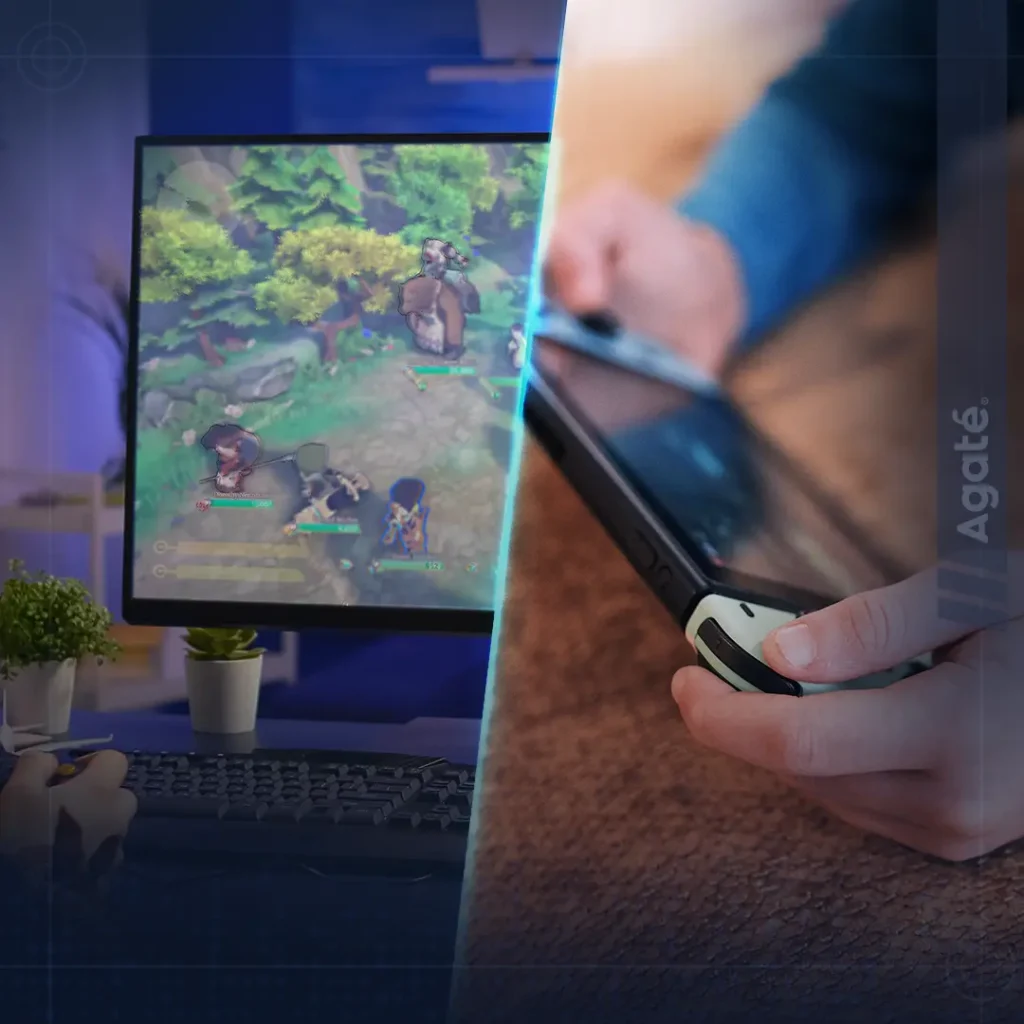
The gaming industry stands as a dynamic force propelling the relentless advancement of modern technology. Game developers consistently push the boundaries of current technological capabilities, fostering a symbiotic relationship that fuels ongoing innovation. At gaming and technology events, technology companies seize the opportunity to unveil their latest triumphs and demonstrate their unwavering commitment to the gaming community. These occasions serve as showcases for the remarkable strides made in the creation of groundbreaking technologies, as well as for the unveiling of other innovations designed to enrich the lives of gamers. The most recent event is Gamescom 2023. Now, let’s delve into some noteworthy updates concerning the most popular game platforms in the gaming landscape. PC Gaming NVIDIA has taken a significant leap forward in enhancing the gaming experience by introducing Deep Learning Super Sampling (DLSS) version 3.5. technology leverages the power of artificial intelligence to elevate the quality of graphics rendering to unprecedented heights. With DLSS 3.5, the rendering process achieves remarkable speed and crafts images of unparalleled visual fidelity. This innovation will redefine the graphic standards for gamers and usher in a new era of immersive gaming. Watch the video here. Play Video Meanwhile, AMD unveiled two new additions to its lineup. The RX 7800 XT 16GB and RX 7700 GPUs will be available on the market on September 6, 2023. These powerful graphics cards promise to deliver a gaming experience that combines raw performance with advanced features, catering to the demands of both casual gamers and hardcore enthusiasts. Additionally, AMD has introduced HYPR-RX in its driver software to optimize game performance, ensuring that players can extract every ounce of potential from their AMD GPUs. Watch the presentation here. Play Video ASUS, a prominent player in the gaming hardware arena, has also stepped up to the plate, offering an array of innovations designed to elevate the gaming experience. Their latest motherboards, OLED monitors, and high-speed routers, capable of supporting astonishing speeds of up to 30,000 MBps, stand as testaments to ASUS’s commitment to empowering gamers with the finest tools. On the portable gaming front, the introduction of the Steam Deck has sent ripples of excitement throughout the gaming community. This handheld gaming device redefines the concept of gaming on the go, making PC gaming more practical and accessible than ever before. Steam Deck’s versatility and power open up new possibilities for gaming enthusiasts. The success and anticipation surrounding the Steam Deck have not gone unnoticed by other tech giants. Companies like Asus, with the ROG Ally, Logitech with the G Cloud, and most recently Lenovo, with the Lenovo Legion Go, have all entered the fray as Steam Deck competitors. This healthy competition promises to drive innovation and choice in the portable gaming market, benefiting gamers by offering diverse options to suit their preferences and needs. Nintendo The anticipation within the gaming community has reached a fever pitch as news surrounding Nintendo’s highly anticipated next-generation console, the Nintendo Switch 2, resurfaces. Recent reports have revealed that Nintendo conducted a closed tech demo test at the Gamescom 2023. According to rumors, the Nintendo Switch 2 is expected to be released in 2024. This timeframe has gamers counting the days until they can experience the next phase of Nintendo’s gaming vision. The promise of new hardware, innovative gameplay experiences, and potentially groundbreaking features has ignited imaginations and fueled discussions within the gaming community. PlayStation PlayStation has unveiled an exciting innovation in PlayStation Portal. This device represents a significant stride forward in remote play, offering players unparalleled flexibility and convenience. With the PlayStation Portal, players can seamlessly enjoy their PlayStation 5 experiences even when the TV is engaged for other purposes, ensuring uninterrupted gaming sessions. Play Video In addition to the PlayStation Portal, Sony has introduced a range of other gaming peripherals and devices to enhance the overall gaming experience. Among these offerings are exclusive headsets specially crafted for PlayStation enthusiasts. These headsets are designed to immerse players in the rich audio landscapes of their favorite games, delivering crystal-clear sound and an immersive auditory experience that amplifies the thrill of gaming. Whether it’s the adrenaline-pumping action of a first-person shooter or the atmospheric storytelling of a role-playing game, these headsets elevate the gameplay to new heights, allowing players to hear every subtle detail and immerse themselves fully in the virtual worlds they explore. XBOX ID@Xbox, standing for “Independent Developers at Xbox,” has become a symbol of empowerment for indie creators, fostering a dynamic and diverse ecosystem of game development. Over the past ten years, it has been a launchpad for countless innovative and imaginative games that have left an indelible mark on the gaming world. ID@XBOX has been instrumental in bringing a rich tapestry of indie games to players around the globe. To celebrate its 10th anniversary, Xbox continues to define its commitment to indie game development. Developers now have the incredible opportunity to pitch their game concepts directly to Microsoft through the Xbox developer portal. This game-changing innovation further underscores the importance of empowering indie creators and fostering their unique visions. Are you looking for co-development, art services, or game porting? Look no further than Agate! Don’t hesitate to get in touch with us today and learn more about how we can help you take your project to exceptional heights.
Exploring the Video Game Trends of 2023 and Beyond
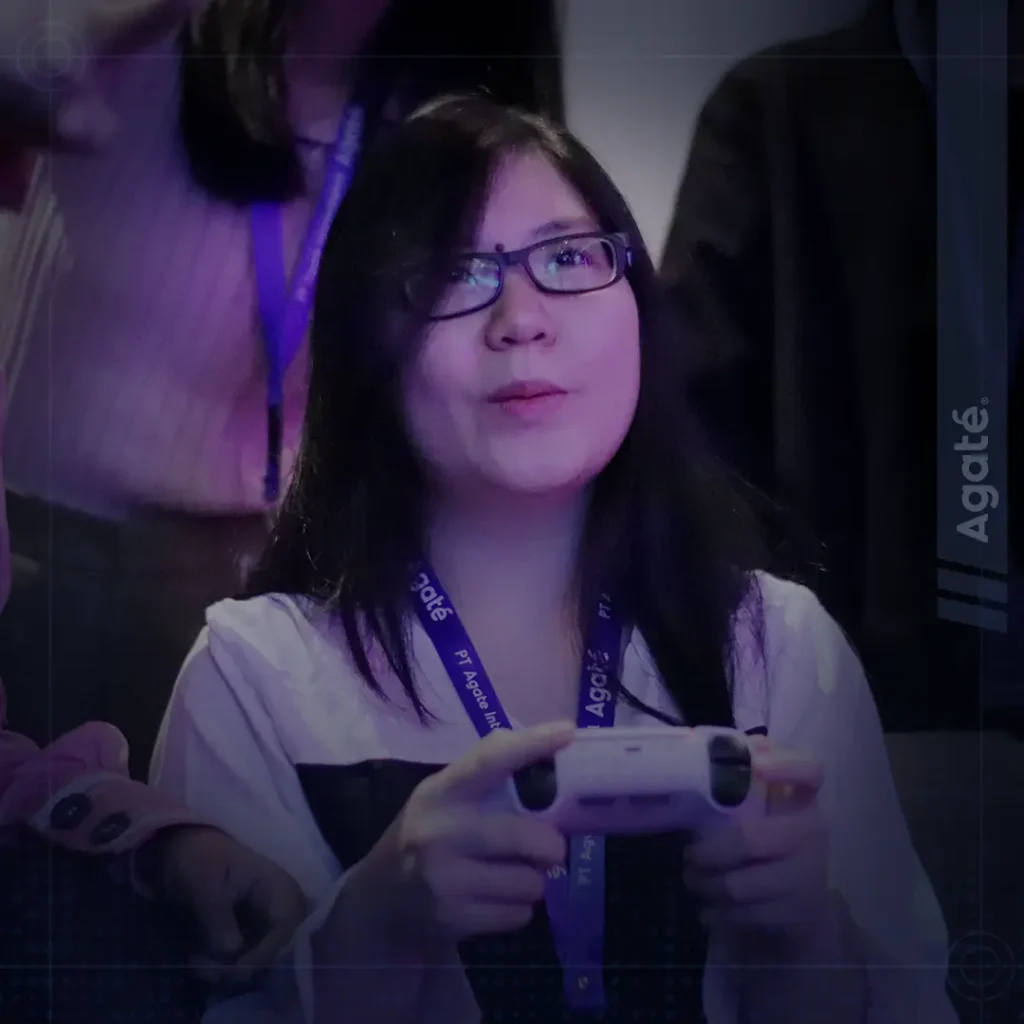
As we find ourselves into the latter half of 2023, the dynamic and ever-evolving landscape of the gaming industry shows no signs of slowing down. As an industry player, whether you’re a game developer, publisher, or an enthusiastic gamer, it’s crucial to keep a watchful eye on these video game trends that are shaping the future of gaming in the coming years. Cross Platform Games The ongoing console sales rivalry has ignited a relentless drive toward harnessing increasingly sophisticated technology. Beyond merely competing in terms of raw technological power, console manufacturers are also creating strategic partnerships with game developers to curate exclusive titles, each aimed at capturing the attention and loyalty of potential buyers. This strategy has proven a powerful marketing tool, as gamers often align their console choice with the exclusive games they desire to play. However, this escalating technological prowess within the console industry has inadvertently ushered in new video game trends, prompting a demand for cross-platform compatibility. Remarkably, the uniformity in computing processing capabilities across consoles has created an environment where most of them can run similar games. As a result, gamers now face the dilemma of choosing a specific console while anxiously awaiting the release of their preferred titles on that platform. This phenomenon emphasizes the importance of game publishers adapting to this changing landscape by considering cross-platform compatibility during game development. Embracing this approach allows publishers to cater to a broader audience and ensures that gamers can enjoy their favorite titles regardless of the console they own. In this era of technological convergence, the ability to provide seamless cross-platform gaming experiences has become a pivotal factor for both console manufacturers and game developers looking to stay competitive and meet the diverse preferences of modern gamers. Cloud Gaming As technology advances at an astonishing pace, the complexity and sophistication of video games have surged. These contemporary games, while pushing the boundaries of entertainment, come with a significant advisory, their substantial storage requirements. Recently, games have become increasingly common to occupy tens of gigabytes of storage space, presenting a practical dilemma for gamers, especially those using consoles with limited storage capacity. So, to make room for new titles, players are often compelled to decide to delete older games. Consequently, if they wish to revisit these discarded favorites, they face the inconvenience of re-downloading the entire game. This dilemma has created a unique problem for gamers, particularly those who prefer digital game purchases, driving a renewed interest in the trend of cloud gaming. Cloud gaming has resurfaced as a viable solution to this storage problem. This innovative technology allows players to stream games, shifting the bulk of the computational workload from their devices to remote computer servers. The appeal of cloud gaming lies in its ability to free players from the burden of continuously upgrading hardware and its potential as an alternative avenue for cross-platform gaming, demanding nothing more than a stable internet connection on the player’s chosen device. With this condition, gamers no longer need to invest in top-of-the-line hardware to enjoy the latest games. However, despite its advantages, cloud gaming still grapples with the current limitations of internet infrastructure, which is not evenly distributed worldwide. The technology’s reliance on high-speed internet connectivity makes it less than ideal for new games that require extensive data transfers, potentially leading to lag or interruptions. As a result, cloud gaming finds its most suitable application with older games, which necessitate less data transfer, ensuring a seamless and satisfying gaming experience that aligns with today’s internet infrastructure capabilities. Blockchain Games While crypto and NFT technology have gained significant attention, they still require further education and integration into mainstream society. Blockchain gaming emerges as a critical driver in this process, bridging the gap between the esoteric world of cryptocurrencies and the wider public. By immersing players in blockchain-powered ecosystems, these games provide an engaging and practical introduction to these emerging technologies. This educational aspect is crucial in demystifying the complexities of blockchain, making it more accessible and commonplace in everyday life. Beyond education, blockchain games are renowned for their transparency and security features. The inherent immutability of blockchain ensures that in-game items and transactions resist fraud and tampering, significantly reducing the prevalence of cheating and unethical practices within these gaming ecosystems. Furthermore, blockchain technology empowers developers to create in-game assets that are genuinely rare and unique, backed by provable scarcity on the blockchain. These assets can serve as badges of honor for players, enhancing their gaming experiences and fostering a sense of pride and status within the community. As the adoption of blockchain technology in gaming continues to gain momentum and become one of the biggest video game trends, 2023 promises to be a pivotal year for the emergence of more blockchain-based games. These games can offer fresh and thrilling experiences while reshaping the traditional gaming landscape. With their potential to revolutionize ownership, transparency, and security in the gaming world, blockchain games are a dynamic force that educates and transforms how we interact with virtual worlds and digital assets. Virtual Reality Virtual Reality (VR) can be a game-changer in the video game industry in 2023. With the release of more advanced and affordable VR hardware, such as the latest iterations of Oculus Rift and PlayStation VR, gamers can expect unprecedented immersion. VR gaming takes players beyond the realm of the screen and thrusts them into a fully three-dimensional, interactive world. This video game trend is set to redefine how we experience games, offering a level of realism and engagement that was previously unimaginable. Whether exploring fantastical landscapes, engaging in intense combat, or simply socializing with friends in virtual spaces, VR is primed to revolutionize gaming by making it a profoundly sensory and visceral experience. Furthermore, the gaming industry is witnessing an increasing number of titles specifically designed for VR. These games not only harness the technology for enhanced graphics and gameplay but also explore novel ways of storytelling and interaction. In 2023, gamers can anticipate a more comprehensive selection of VR
Advergaming and Advertising in Video Games for Brands
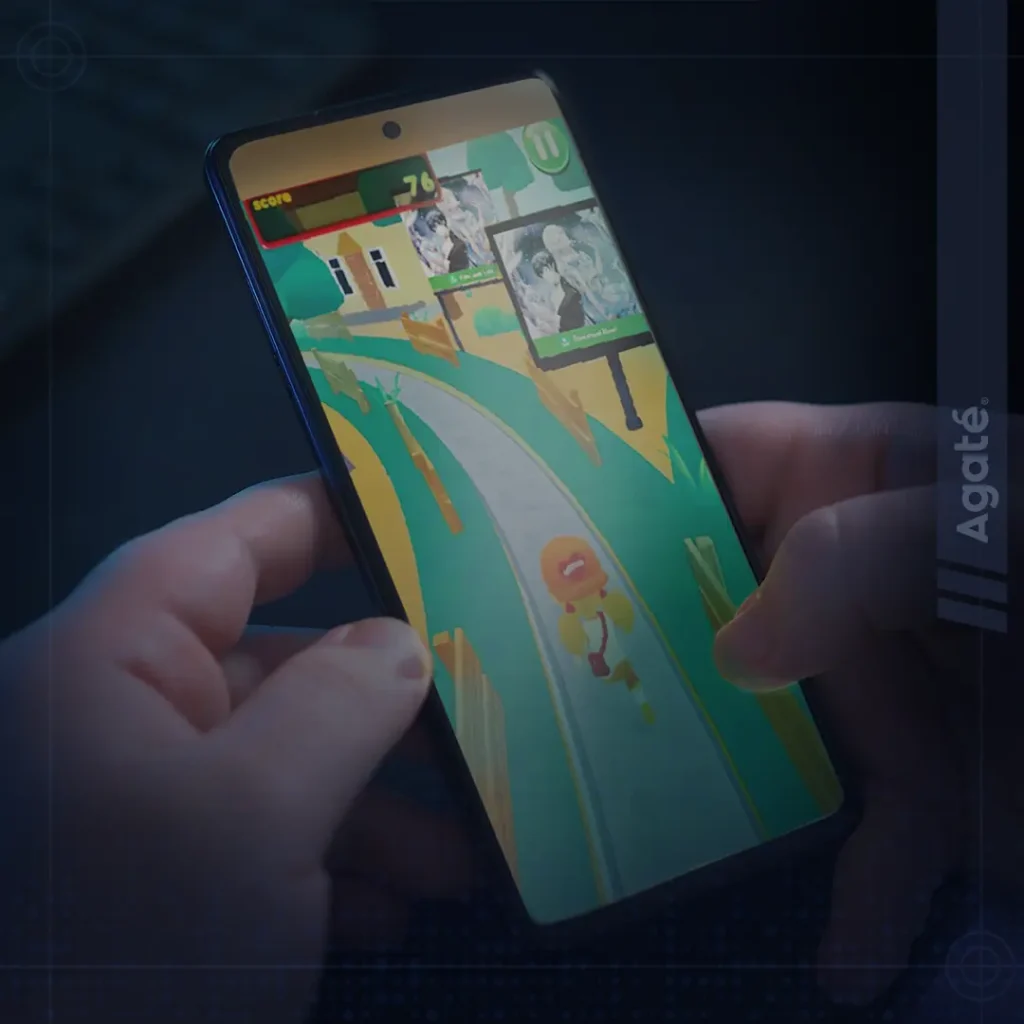
Ever wondered why mobile games have so much advertising in them? This is because video games are not just a form of entertainment, but they are also a powerful medium for advertising. According to a report by Fortune Business Insights, the global gaming market size was valued at $249.55 billion in 2022 & is anticipated to grow from $281.77 billion in 2023 to $665.77 billion by 2030. This means video games offer a huge and diverse audience for brands to reach and engage with. However, advertising in video games is not as simple as placing a banner or a pop-up on the screen. Gamers are savvy and discerning consumers who demand more immersive and interactive experiences from their games. They also have high expectations and low tolerance for ads that are irrelevant, intrusive, or boring. This is where advergaming and advertising in video games come in. And no, it’s not a misspelling or anything like that; it is really called “advergaming.” For those of you who aren’t familiar, advergames are games that are created to advertise their consumers or their purpose is actually trying to sell you something. That’s right, some games are made just to advertise a product, service, or brand. Pretty clever, huh? On the other hand, if you see ads inside the games you play. Like billboards, posters, or banners. Those are also a way to promote a product, service, or brand. That’s called advertising in video games. But how do advergaming and advertising in video games work? What are the benefits and challenges of using them? And what are the best practices and tips for creating effective and engaging ads in video games? Let’s talk about that, shall we? Types of Ads in Video Games There are different types of ads in video games, each with its own advantages and disadvantages. Here are some of the most common ones and how they work: Static ads Fixed ads don’t change during the game. Static ads can be seen on billboards, posters, or other objects in the game environment. Static ads are easy to implement and can blend well with the game theme. However, they can also be boring and ineffective if they are not relevant or appealing to the players. Dynamic ads Dynamic ads can change in real-time based on various factors, such as the player’s location, preferences, or behavior. Dynamic ads can be seen on banners, pop-ups, or videos in the game. Dynamic ads are more flexible and creative and can target specific audiences more effectively. However, they can also be intrusive and annoying if they interrupt the game flow or are not well-integrated with the game design. Advergames As mentioned before, these are games that are specifically designed for advertising purposes and feature products or services as part of the game concept or mechanics. They can be standalone games or mini-games within larger games. Advergames are very entertaining, interactive and can create a unique experience for players. However, they can also be time-consuming and challenging to develop and may require a separate distribution channel. Native ads Ads that look like they belong in the game environment and enhance the game experience. Native ads can be seen on branded items, vehicles, weapons, or levels in the game. Native ads are more immersive, engaging and can create a positive association between the brand and the game. However, they can also be costly and difficult to implement and may require collaboration with the game developers. Video banner A type of in-game advertising that plays a video instead of showing an image. The video is integrated into the game’s environment and looks like a natural part of the game world. Video banners are usually placed in locations where real-life ads are found, such as buildings, billboards, or roadsides, and can be seen behind the main action of the game. Audio ads These are ads that use sound effects or music to promote products or services in a subtle way. They can be heard in the background or during specific moments in the game. Audio ads are more integrated and less intrusive and can appeal to players’ emotions. However, they can also be muted or overlooked by players if they are not clear or distinctive enough. Product placements: These are ads that use real products or services in the game environment as part of the game story or gameplay. They can be seen on characters’ clothing, accessories, or equipment in the game. Product placements are very effective and memorable and can create a strong impression on players. However, they can also be expensive and risky and may require approval from the product owners. Benefits of Advergaming and Advertising in Video Games Advergaming and advertising in video games offer many benefits for brands and consumers alike. Some of these benefits include: Increased brand awareness Advergaming and advertising in video games can increase brand awareness by exposing players to products or services that they might not otherwise encounter. According to a Nielsen Games study, of the 534 active video game players surveyed by Nielsen, 11% purchased a brand advertised in a game or sought more information about it, 19% talked about a brand after seeing an in-game ad, and 10% recommended the product to a friend. Improved brand perception Advergaming and advertising in video games can improve brand perception. Blending and integrating ad content into the games allows for a non-interruptive and seamless gaming experience which can leave users with a positive and long-lasting impression of brands. Encourage players to play longer A study by Meta found that publishers stand to benefit from in-game ads, improving perceptions of their game and the overall gaming experience. In-game ads by big brands can enhance a game’s credibility, with 43% agreeing that games that show ads from “big brands” are more legitimate and credible. Challenges of Advergaming and Advertising in Video Games Advergaming and advertising in video games also pose some challenges for brands and consumers alike. Risk of backlash is one of the main concerns of Advergaming and advertising in video games. Players
Google Gaming Odyssey: Stadia’s Legacy and Cloud Gaming’s Dawn
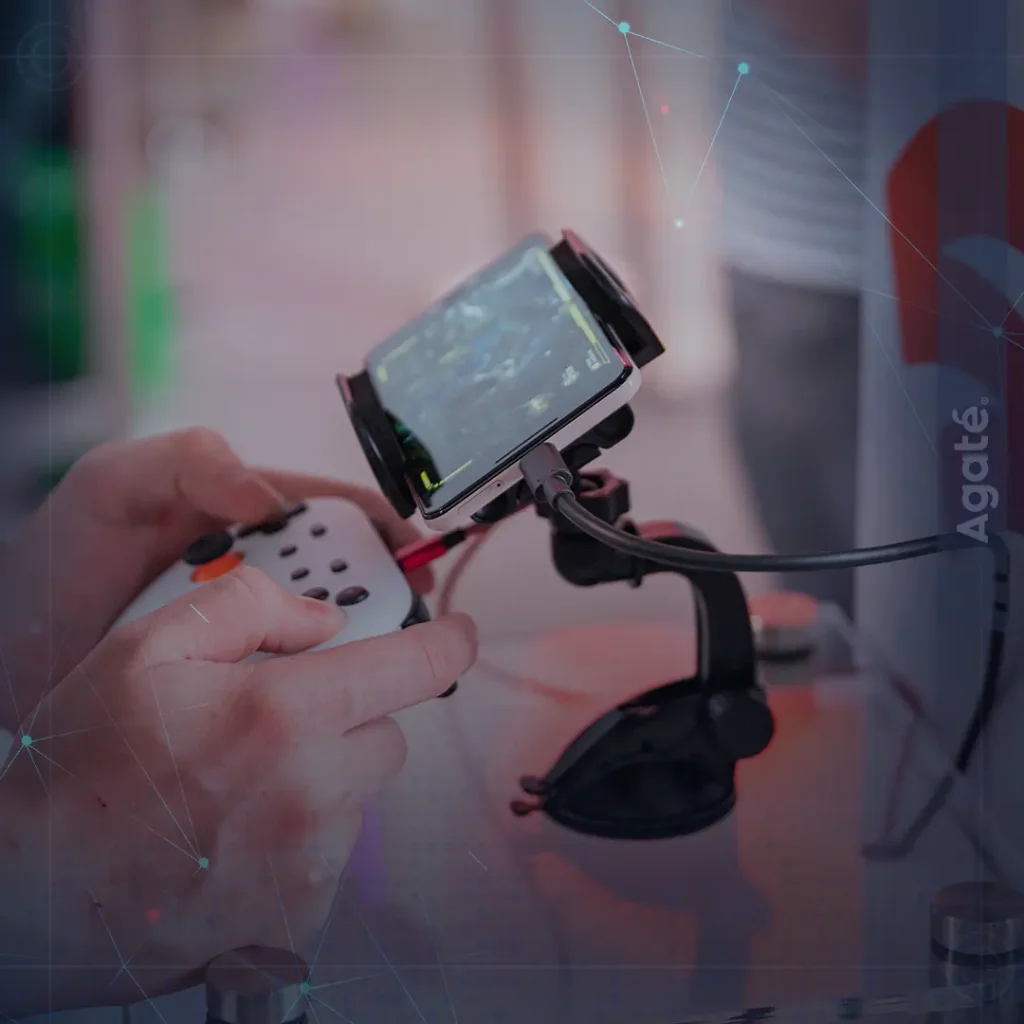
Started as a search engine company, Google has become a massive player within the global technology landscape. Among its contributions, Google’s role in creating the Android Operating System (OS) is a beacon of innovation. This dynamic OS has revolutionized how we interact with mobile devices and influenced the mobile gaming sphere. By providing a robust platform for game developers and enthusiasts alike, Google’s Android OS played an instrumental part in the meteoric rise of the mobile gaming industry, thus leaving a mark on the trajectory of the entire gaming sector. Google Stadia In 2016, Google started a project called Yeti. This ambitious plan utilized the impressive potential of cloud computing to implement an innovative idea: rendering games from a distance and smoothly streaming them to players’ displays. The consequences of this approach were profound. Players will be free from the limitations of hardware and geographic boundaries. This new approach allows players to play games on their smartphones, laptops, or TVs. As anticipation grew, the online community couldn’t help but draw parallels between Google Stadia and the cinematic content behemoth, dubbing it the “Netflix of gaming.” Despite the similarities to Netflix, Google highlighted that their service model more closely resembled the subscription frameworks of PlayStation and Xbox. The product was eventually named Google Stadia and was launched in 2019. At its launch, Google Stadia unveiled an array of renowned AAA titles to captivate and enthrall the gaming community. However, Google’s ambitions extended beyond the realm of curated classics. They also promised to create original games in collaboration with the talented studios they had acquired, Typhoon Studio. This dual-pronged approach aimed to infuse the Stadia platform with celebrated gems and fresh narratives, cultivating a diverse landscape in the Google gaming platform. However, challenges came up for Google gaming ecosystem. As the game’s complexity increased, so did the computational load, and the volume of data that needed to be streamed to players expanded significantly. Also, a global discrepancy in internet infrastructure presented a formidable obstacle. Not all players worldwide enjoyed swift internet connections, resulting in an uneven user experience. This condition affects the latency during gameplay and translates into disruptive lag and suboptimal gaming encounters on the Google Stadia platform. The unmet high expectations resulted in a mixed response from players. Below-expectation sales figures and declining popularity led Google to shut down the service in January 2023 and mark the end of Google gaming. However, Google’s efforts were not in vain. Despite its fate, Google Stadia provided resounding proof that cloud gaming could be a viable alternative for individuals seeking gaming experiences unconfined by geographical limitations or temporal boundaries. Google Cloud This departure from the gaming landscape was not a retreat but a recalibration as Google continued to weave the narrative of cloud gaming via its formidable Google Cloud platform. This transition exemplified resilience and adaptability as Google capitalized on the insights garnered from Stadia’s journey to reshape its approach. The infrastructure that Google had meticulously developed and nurtured for Stadia now serves as the backbone for cloud-based gaming services. Google Cloud can support games demanding live services and effortlessly bridging the gap between developers and an expansive player base. This transition reveals that while Google Stadia’s journey concluded as a standalone service, its legacy lives on, evolving and expanding to explore new horizons of cloud gaming. Another Endeavor Google gaming try another approach in the game industry as reports indicate that it is improving the gaming experience on YouTube, mirroring comparable strategies by other video platforms such as Netflix and Amazon. This initiative highlights the growing prospects of the gaming sector, solidifying its position as one of the most lucrative industries on a global scale. Are you looking for co-development, art services, or game porting? Look no further than Agate! Don’t hesitate to get in touch with us today and learn more about how we can help you take your project to exceptional heights.

